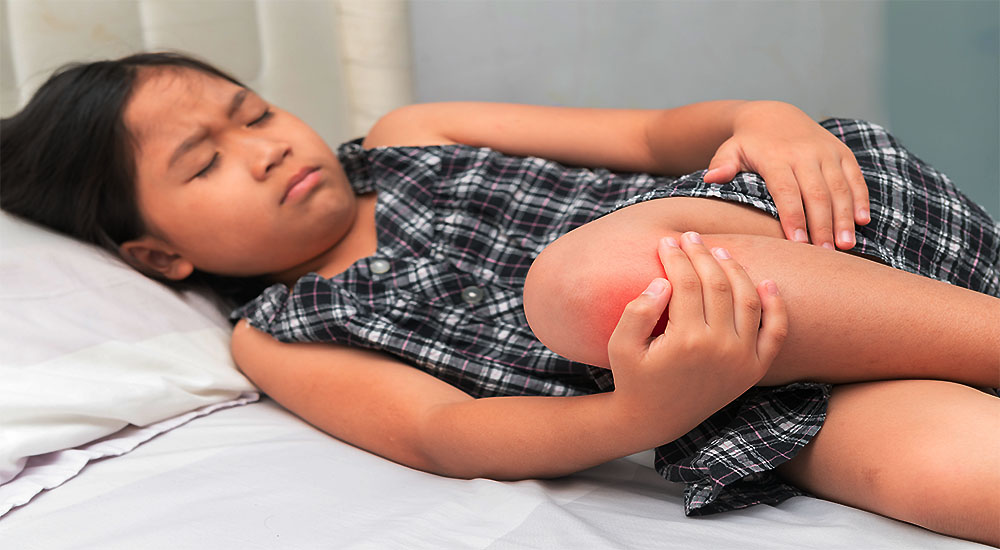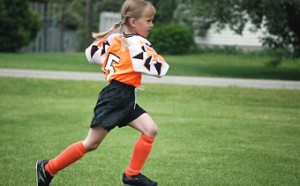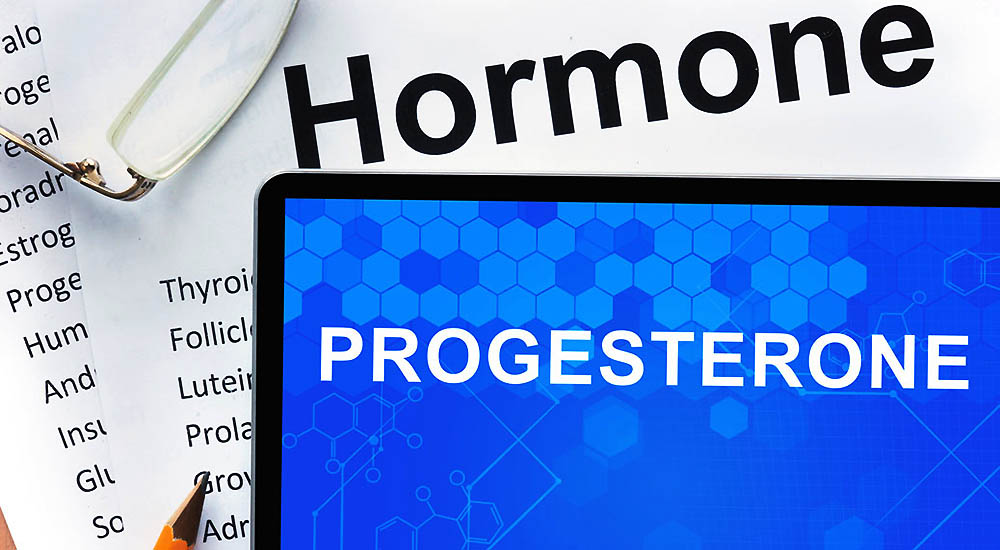Knee Pain in Teenagers and Young Children

 Knee Pain in Teenagers and Young Children
Knee Pain in Teenagers and Young Children
Why Are More Knee Injuries Occurring in Children?
The incidence of knee pain has increased among children and teenagers since I started practice two decades ago. One factor appears to be the quantity and quality of sports which are being played.
I find that children and young adults are being pushed to play competitively at a much younger age and are not allowed to recuperate from their injuries properly. This can lead to a vicious cycle of re-injury, weakness, and compensation as a result. Compensation is when one or more muscles or joints try to ‘help’ or compensate for weakness in another muscle or joint.
When Do You Need to Take Knee Pain Seriously?
Parents need to take the knee pain complaints of their children seriously. Many parents may initially neglect the knee pain, thinking that it will likely go away on its own.
In other cases, they might suspect that their child is attempting to stay away from an activity for one reason or another and therefore exaggerating their symptoms. The safest action is to schedule an evaluation from a physical therapist to ensure that no real damage has occurred.
Precise testing by a trained physical therapist will reveal what is occurring. Granted there are times that injuries are mild enough to be self-limiting and heal on their own. But when should immediate action be taken?
- 1) The child is complaining of knee pain for more than a week
- 2) The child is limping the day following a game or vigorous activity
- 3) The knee pain is affecting the way the child is playing the game or engaging in certain activities, i.e he/she is running slowly or not kicking the ball as much, etc.
- 4) He/she is complaining of unusual noises in the knee or having balance issues
Common Conditions Causing Knee Pain
Below are some common pathologies (diseases) which can affect the knee joint: The most common is Osgood-Schlatter’s Disease, which is an overuse syndrome typically affecting 10 – 14-year-olds. This is caused by a high level of physical activity before skeletal maturity is reached. This condition is commonly exacerbated (made worse) during “growth spurts”.
The child initially complains of generalized knee pain. But when assessed properly, the pain is more pin-point around the lower end of the knee joint where the quadriceps muscle attaches. The pain is enhanced by impact activities such as distance running and jumping. Squatting, stair climbing, and stretching the quadriceps are also painful.
Another common area of pain is around the kneecap. These conditions are grouped together and are called “patellofemoral syndromes” (the patella is the knee cap and the femur is the thigh bone. So the word simply means conditions around the knee area).
Girls experience a higher incidence of kneecap problems than boys. It is especially common in girls with lower leg alignment issues such as “flat feet”, underdeveloped thigh muscles, and rotation of the tibia bone (the bone in the lower leg). The quadriceps and hamstrings are typically always tight in these girls.
Another condition, which is very commonly confused with Osgood-Schlatter’s disease, is Sinding-Larson-Johansson disease. A tendon is partially avulsed (pulled away from the bone) or pulled away from the lower aspect of the patella (kneecap). Localized tenderness occurs in this area. X-rays may demonstrate calcification of the tendon or a stress fracture of the inferior part of the patella.
What is the Best Treatment?
Once the physical therapist evaluates and determines the exact problem occurring in the knee, the treatment can be individualized to suit the child and the sport he or she plays. Additionally, the physical therapist will discover exactly what actions must be taken for the child to successfully play the sport without any further injuries.
Fortunately, it is usually not necessary to stop sports completely. But initial treatment may require some modifications such as taking time off to rest the joint. If the condition worsens, a prolonged period of rest may be needed.
In severe cases, leg splinting is used, but surgery is rarely necessary unless x-rays show an avulsed fragment of bone (a piece of bone pulled off from the main bone) that remains extremely painful in skeletally mature adults (meaning that their bones are fully grown).
Otherwise, gentle stretches for the hamstrings, quadriceps, and IT band (this runs down the outside of the upper thigh to the knee) are helpful to relieve the tension on the knee. Cold packs are a must while in the painful stages. Taping and bracing are also useful adjuncts in the early, painful stages of knee problems.
Once the pain reduces, strengthening and other resistance exercises must be introduced at a progressive rate. Here at Root Cause Medical Clinic's department, we also incorporate many balance activities to re-train the joints and muscles. Research in this area clearly indicates that doing so prevents further injuries to the joint.
Returning to Sports Activities
Returning to sports activities may necessitate a “do as much as you are able to” mentality with the reassurance that the symptoms will eventually cease. Biomechanical training of a particular sports activity is a must.
Each sport has common motions associated with it. If these are being done incorrectly, training can help to retrain incorrect motions that create injuries into healthy motions. Communication with the coach may also be needed.
I have noticed some faulty techniques being promoted by coaches in the supposed name of speed and strength, while in the long run, these techniques may only increase the chances of injury. Improper training exercises can also do more harm than good.
Young children may be encouraged to lift heavy weights that can damage their growth plates (the ends of the bones that allow bones to continue growing in childhood) and cause tears in their muscles. Please note that children should not be lifting anything beyond light weights before they have completed growing.
Knee pain in children must be taken care of immediately. Such injuries, if left untreated, can cause a lifetime of knee problems, plus secondary issues affecting other joints such as the hips, ankles, and spine.
Do you need help with your health?
We have the diagnostic and testing tools, the clinical experience, and a different medical approach to discovering the root cause of why you have the symptoms that are bothering you. As long as you are ready to make some dietary and lifestyle changes, we can help you. We will "hold your hand" through the changes, step by step, to make each step an easy one. We are located in Clearwater, FL, at 1000 S Ft Harrison, at the corner of Ft. Harrison Ave. and Magnolia St. There is plenty of parking space directly accessible from Ft Harrison. If it is not convenient for you to come to Root Cause Medical Clinic, we offer telehealth/telemedicine consultations to residents of certain states. Call us for details.
Contact us for a Consultation – Call 727-335-0400
Ask a Doctor
Have a health concern you'd like to speak with a doctor about? Or just want clarity on a subject? Ask Us!
Featured Articles
Popular Stories

Dr. Rupa Chakravarty DPT, OCS
Director of Physical Therapy at Root Cause Medical
Doctor of Physical Therapy, Orthopedic Certified Specialist
Dr. Chakravarty has numerous certifications for different techniques in Physical Therapy practice. She employs an extensive array of manual as well as exercise techniques to manage her patients’ symptoms during their course of therapy.

 Knee Pain in Teenagers and Young Children
Knee Pain in Teenagers and Young Children
